



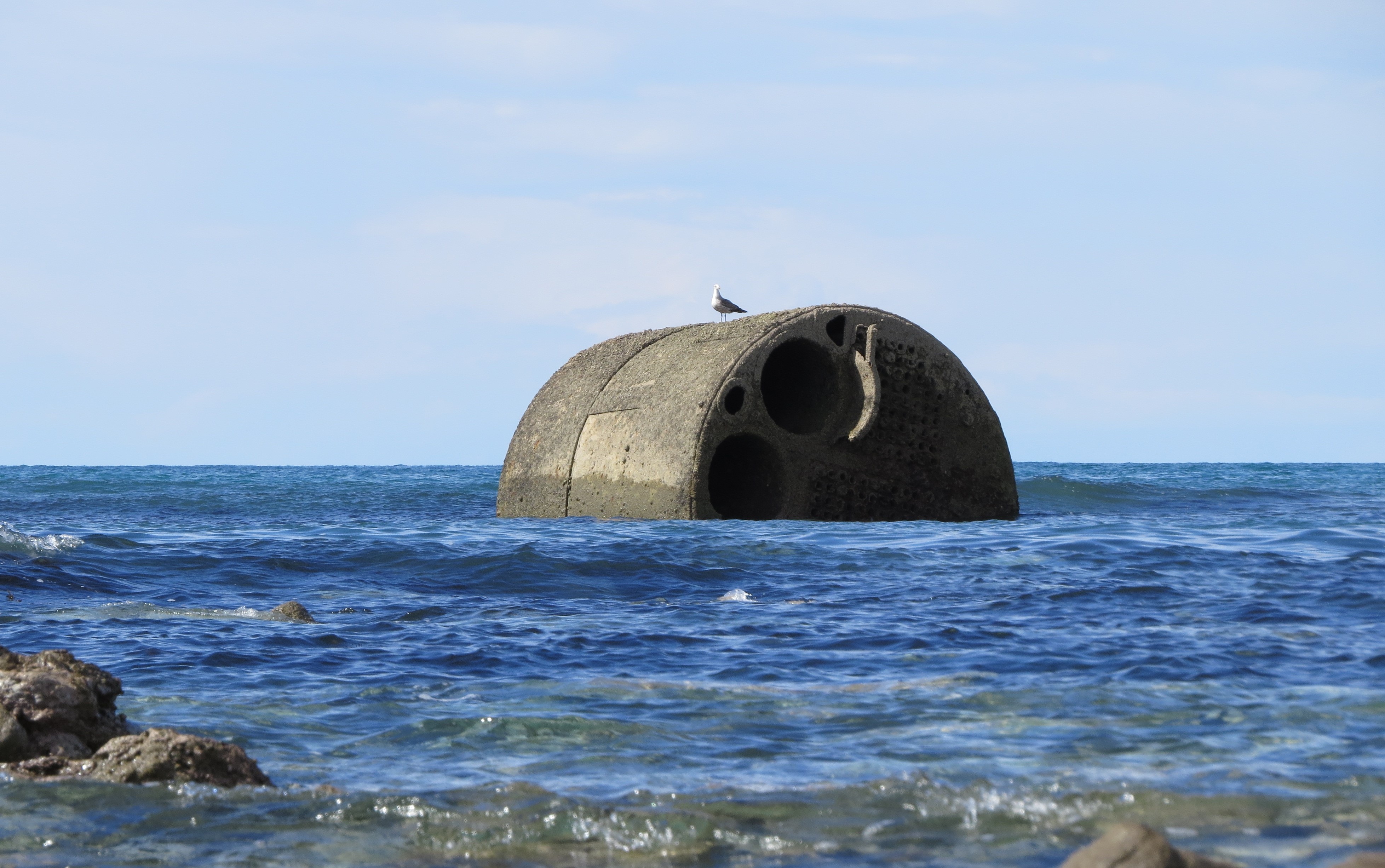
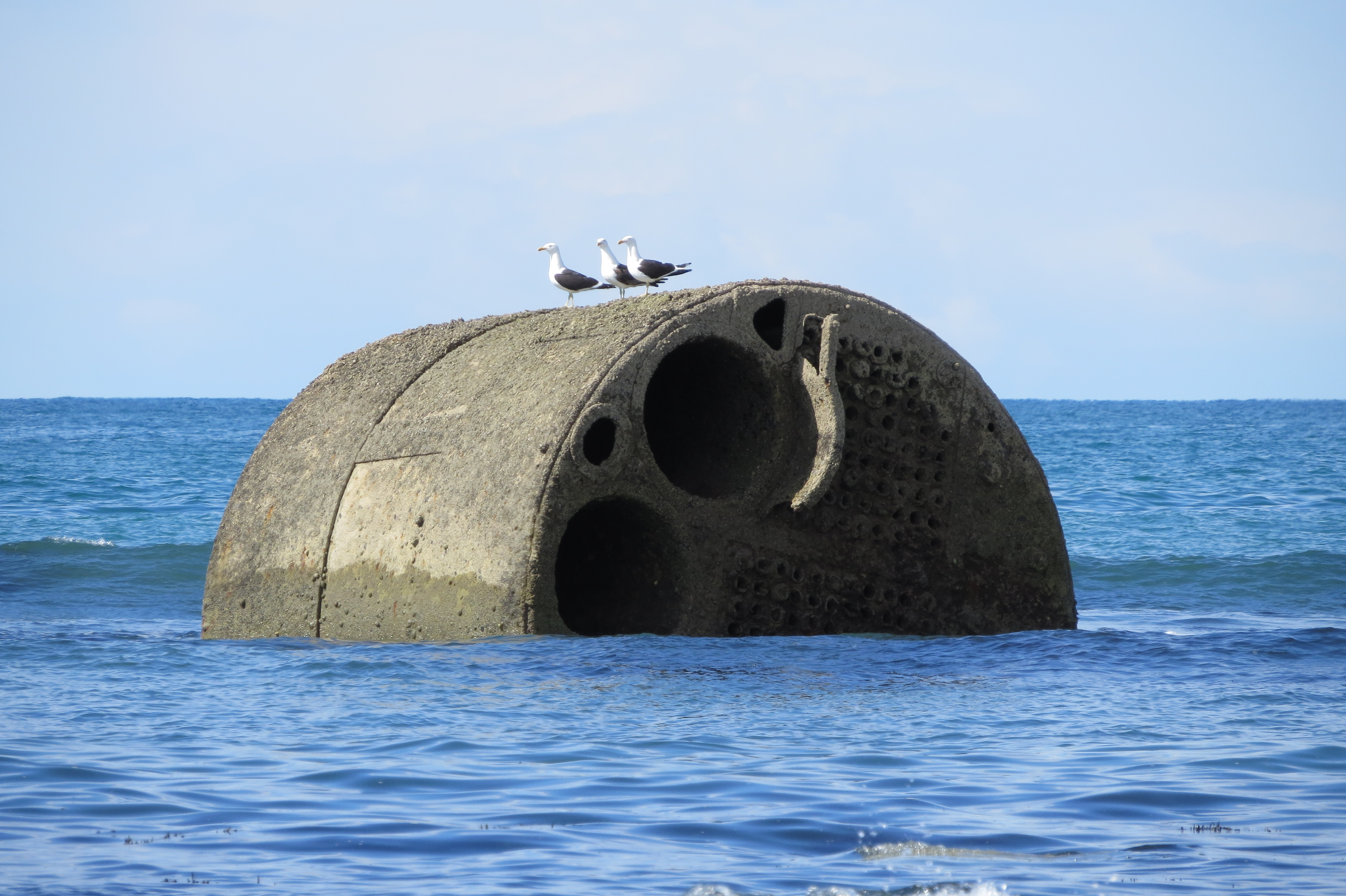
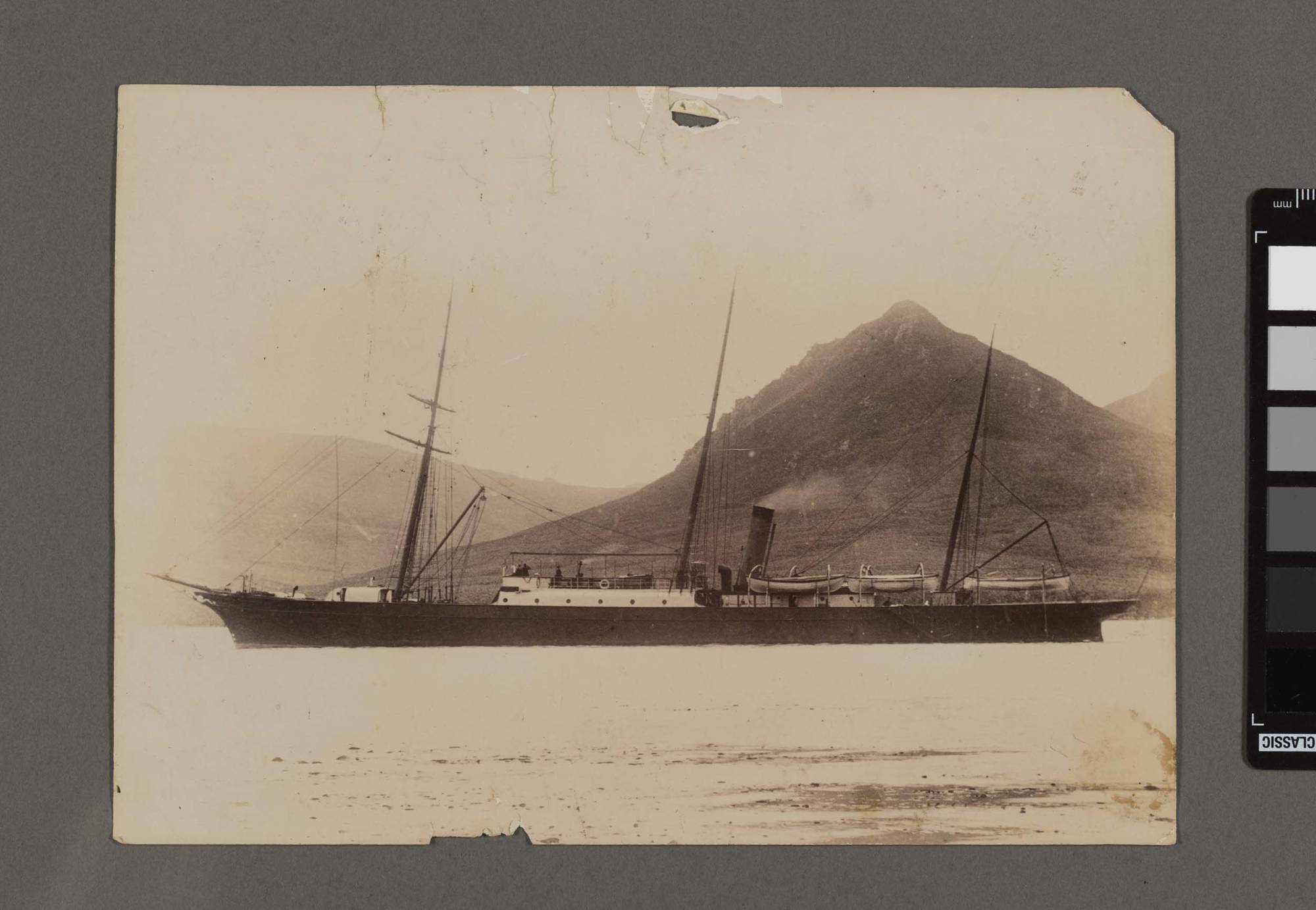
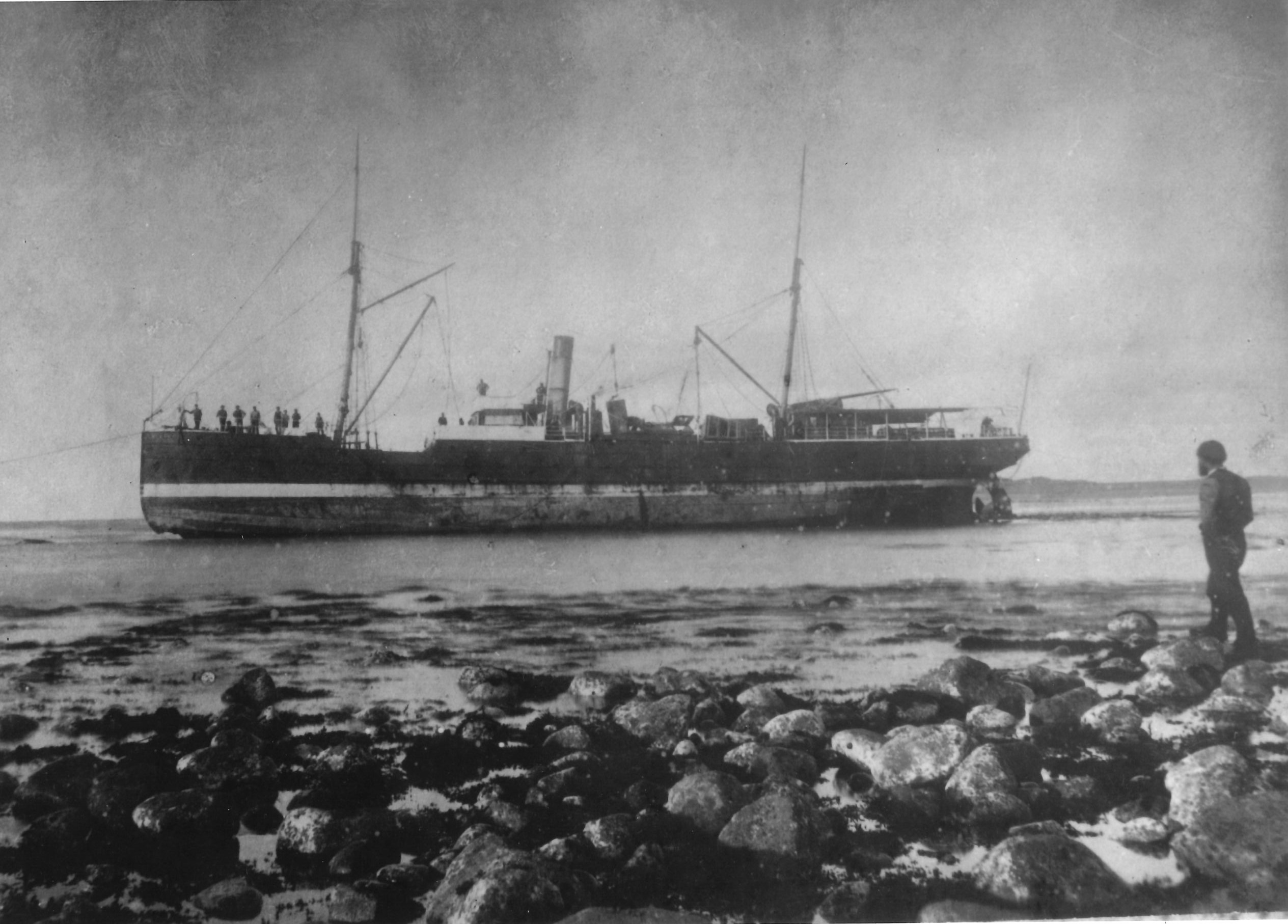
The 491 ton S.S. Wanaka was built in 1876 at Whiteinch, a Scottish City on the River Clyde, by shipbuilders T. S. Wingate and Co Ltd. The Union Steam Ship Company of New Zealand took ownership of the vessel later in 1876, and the Wanaka commenced service carrying goods and passengers on the west coast of New Zealand.
On Monday 24 March 1884, the Wanaka became the first Union Steam Ship vessel to dock at the recently completed New Plymouth Breakwater - alongside the Argyle, of rival firm The Northern Shipping Company. Completion of the breakwater halved the time for unloading cargo from the ship; previously large ships had to anchor off the coast, and ferry goods to shore in smaller boats.
At 2pm on Wednesday 1 April 1891, the Wanaka left Onehunga on her regular run to the New Plymouth Breakwater. With the respected Captain James Mead at the helm, she was due to arrive at the breakwater at 4am the next morning. However, whilst the sea was calm, the night was misty, and combined with the smoke from bushfires burning on land, visibility was reduced at times to less than a steamer length ahead.
At 2:10am Meads saw the ship had run only 109 miles - on this course he always ran 117 miles, if he did not pick up his mark then he would shut down the engines and change heading to the north. As he still had five or six miles to go, he didn't see any reason to alter his course at this point.
By 3am he should have seen the lights of Waitara, however these, and also the breakwater light, were obscured by the haze and smoke. At 3:30am Meads ordered the course be changed by a point to south-half-west. By quarter to four the light of a house or bush fire was sighted on shore, and five minutes later, at ten to four, Meads sighted broken water and immediately ordered the ship to turn "hard a port". However, it was too late, and on turning, the stern of the ship struck the Puketapu Reef off Bell Block Beach, near the mouth of the Mangati Stream.
With no response to the distress rockets launched, and several failed attempts to get her off the reef, the ships boat was dispatched to the breakwater to seek help. The Mohaka was in port, and was dispatched to transfer cargo an passengers to the breakwater - almost all of the cargo except some saturated flax was salvaged during the first day. No passengers or crew were injured in the stranding, however, four of the ships crew were involved in a trap accident on Devon Street near the Te Henui whilst whilst returning from the wreck during salvage operations. Two were injured, and unfortunately, Charles Swan, second engineer, later had his leg amputated.
An official inquiry was carried out, headed by Mr C. C. Kettle. Captain Mead was found to have failed to take proper precautions to take the ship to a known safe point when he was unsure about the actual position of the ship between the hours of 3am and his sighting of land before the collision. However, the board of inquiry found that "...the action of the captain in navigating the vessel as he did amounted to an error of judgment deserving of censure rather than of wilful disregard or neglect". His captain's certificate was therefore not cancelled or suspended, but he was ordered to pay the costs of the inquiry. Several practical suggestions were also made, including that steamers should be supplied with 'Thompson's patent logs', and stronger lights be placed at Waitara and the Breakwater. The decision of the board of inquiry later earned praise from well known British shipping journal, the London Shipping Gazette, and believed the Wanaka enquiry provided valuable lessons for maritime investigations in Britain.
However, the Board of Directors of the Union Steam Ship Company could not see any way to depart from the company's rule that "in the event of a stranding the master will not be re-instated unless in the case of exceptional circumstances", and Mead was, regrettably, let go. He returned to New Plymouth for a short period in September 1891, before moving to Sydney in the hope of finding further work.
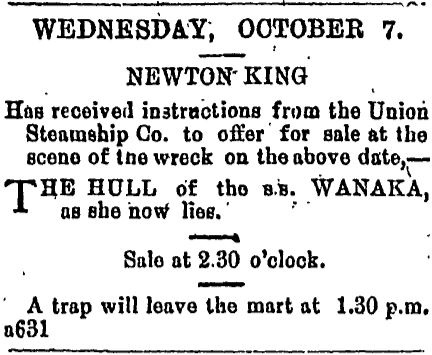
Taranaki Herald, 3 October 1891
In the following months three attempts were made to re-float her, with equipment brought up from Wellington for the purpose. However, after poor weather and worsening hull damage, it was decided to dismantle her. The hull was sold to Mr Oldfield, with much of the iron shipped to the Onehunga Ironworks for re-use. Final blasting of the remainder of the hull using explosives was carried out by a Mr McIvor in June 1893.
Today, all that remains of the Wanaka is her 141 year old boiler, visible from Bell Block Beach at low tide, and in surprisingly good condition for having endured the unforgiving Tasman Sea for the past 126 years. The S.S. Wanaka is remembered in the naming of nearby Wanaka Terrace.
For further information see attached newspaper reports on the Papers Past website, and also Margaret De Jardine's excellent book on Taranaki shipwrecks: Shipwrecks on and off the Taranaki Coast: Incorporating strandings, sinkings and some sailings, pp.135-137- available at Puke Ariki.
Please do not reproduce these images without permission from Puke Ariki.
Contact us for more information or you can order images online here.